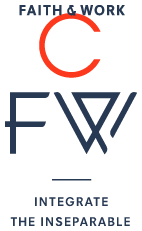
Blog
CFW’s
2015
Conference:
You Had to
Be There
By Carey Wallace
You can’t catch up on what you missed at the Center for Faith and Work’s 2015 conference by reading this.
The content, as always, was world class.
Author Daniel Nayeri opened the conference with a hilarious and poignant story about one part of his professional path: a transition from publishing to pasty chef.
Bill Milliken, founder of Communities in Schools and author of Tough Love, spoke movingly about the power of community to transform first his own life, and then the lives of countless students who moved through his program.
Tim Keller traced the history of the seismic shift from traditional societies’ emphasis on community, to the modern cult of the individual, noting the claustrophobia of some communities, the loneliness of individualism, and the fact that these tensions only resolve when our hearts are rooted in the love of Christ.
Mary Vandenberg, professor of systematic theology at Calvin Theological Seminary, gave a crash course in covenant theology, and the ways in which God makes promises not to individuals, but to communities.
Psychiatrist Curt Thompson spoke about the role shame plays in keeping us from fully engaging in community.
Peter Heslam, director of Transforming Business, described the results of his own research among communities of business leaders and the ways in which Dutch thinker Abraham Kuyper’s faith helped shape his entire nation.
But often, the highlight of any conference is not the speakers, however accomplished. It’s the community — the new friends, the pleasant surprises, the old acquaintances.
And instead of letting those connections happen by accident, on the margins, the Center for Faith and Work put experiments in community in the center of the conference, carefully cultivated.
Sandra McCracken invited the crowd to become a community through times of reflection and worship. Panels demonstrated community as they explored community — various viewpoints, all wrestling with the same questions.
But the main event of the conference did not take place on stage. As in Jesus’ ministry, the real action occurred around the table, over a series of meals chosen by The Pixie and Scout.
This was the heart of the conference: not education, but connection. Not just another handful of smart ideas, but the chance to actually engage with other people, with all the nerves, surprise, friction, wonder, and revelation that entails.
So you can’t find out what happened there by reading the notes, because all attendees experienced their own unique conference.
And the best stuff happened not when the speakers spoke to the crowd, but when people talked with each other.
The good news? We don’t always need the big time speakers to learn and grow.
In fact, it may be the woman sitting across from us who says something that sets us free. Or something we say that the guy next to us really needed to hear.
And whether we made it to the conference or not, the power of community is always available to all of us, any time we take the time to connect with the people in our own worlds.
